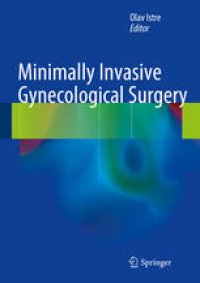
Ebook: Minimally Invasive Gynecological Surgery
Author: Olav Istre (eds.)
- Tags: Gynecology, Minimally Invasive Surgery, Obstetrics/Perinatology
- Year: 2015
- Publisher: Springer-Verlag Berlin Heidelberg
- Edition: 1
- Language: English
- pdf
In this book, world-renowned experts describe the latest advances in minimally invasive gynecologic surgery and explain why endoscopy is of key importance in so many conditions. Hysteroscopic instrumentation is described and the application of hysteroscopic techniques in patients with polyps, fibroids, malformations and infertility is explained and evaluated. Individual chapters are devoted to the current minimally invasive treatment of endometriosis, endometrial polyps and adenomyosis. The role of laparoscopy in gynecologic oncology and the laparoscopic approach to hysterectomy are fully discussed. Various other applications of laparoscopy are considered, with coverage of techniques including traditional straight stick laparoscopy, barbed suture and robotic and single port surgery. Neurophysiology and the use of laparoscopic therapy to restore vital function are discussed and complications of laparoscopic surgery are also addressed.
Approximately 70% of gynecologic surgical procedures can now be performed with minimally invasive techniques. In this book, world-renowned experts describe the latest advances in the field and explain why endoscopy is of key importance in so many conditions. The scope of the book is broad. Hysteroscopic instrumentation is described and the application of hysteroscopic techniques in patients with polyps, fibroids, malformations, and infertility is explained and evaluated. Individual chapters are devoted to the current minimally invasive treatment of endometriosis, endometrial polyps, and adenomyosis. The role of laparoscopy in gynecologic oncology and the laparoscopic approach to hysterectomy are fully explored, and the relative merits of laparoscopic supracervical hysterectomy and total laparoscopic hysterectomy are evaluated. Various other applications of laparoscopy are considered, with coverage of techniques including traditional straight stick laparoscopy, barbed suture, and robotic and single port surgery. Neurophysiology and the use of laparoscopic therapy to restore vital function are discussed, and complications of laparoscopic surgery are also addressed.
This book will be of interest to gynecologic and pelvic surgeons and will also be invaluable for residents and fellows wishing to learn more about the state of the art in minimally invasive gynecologic surgery.